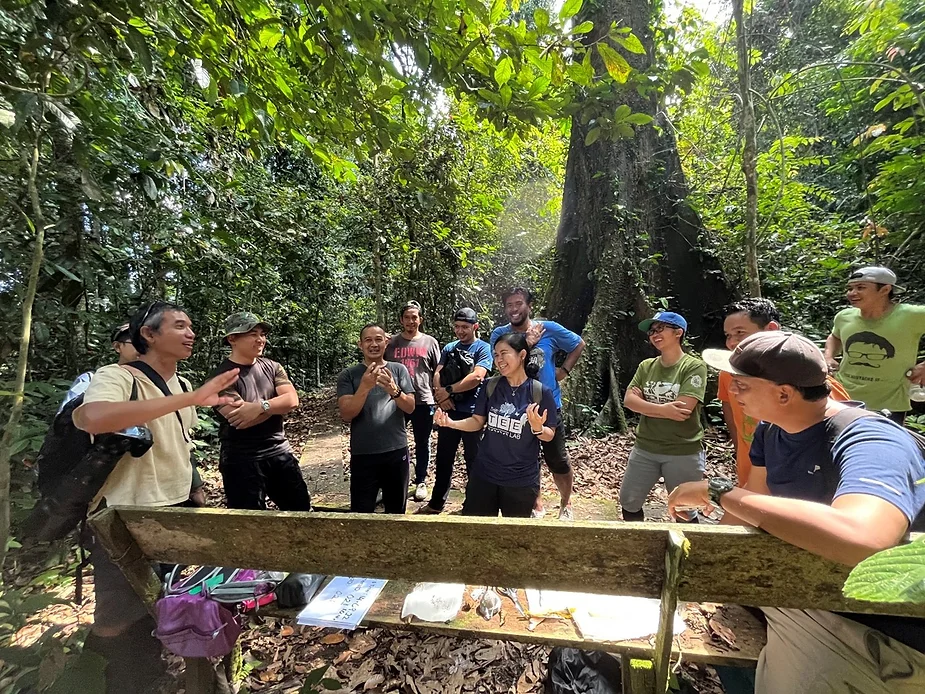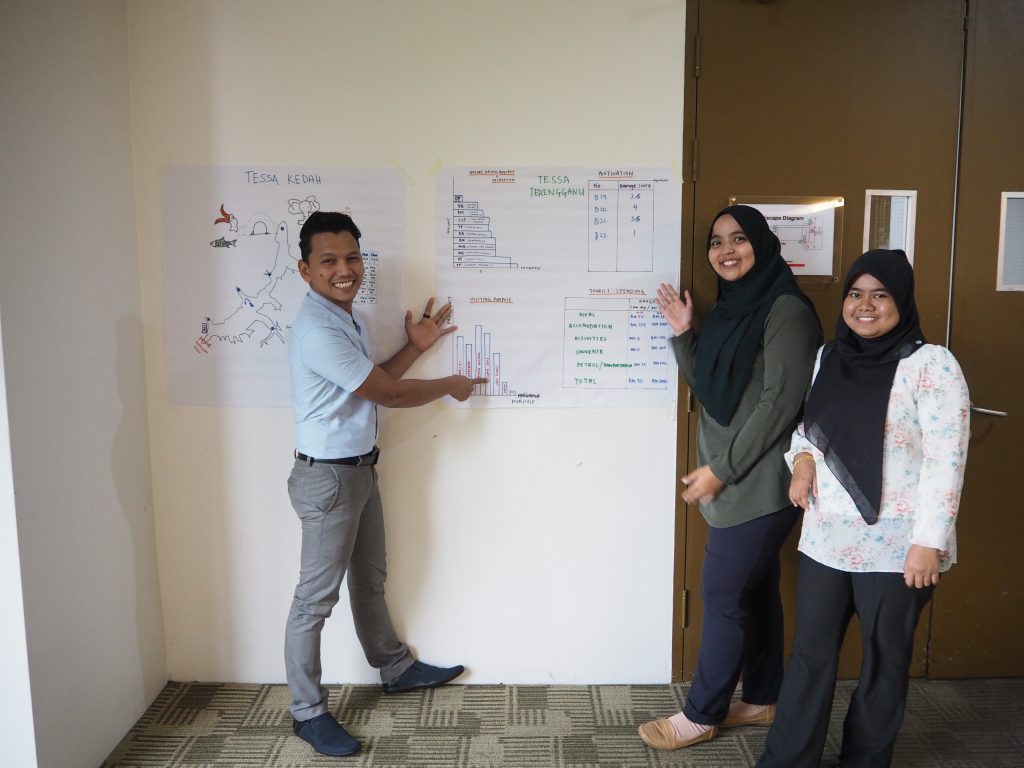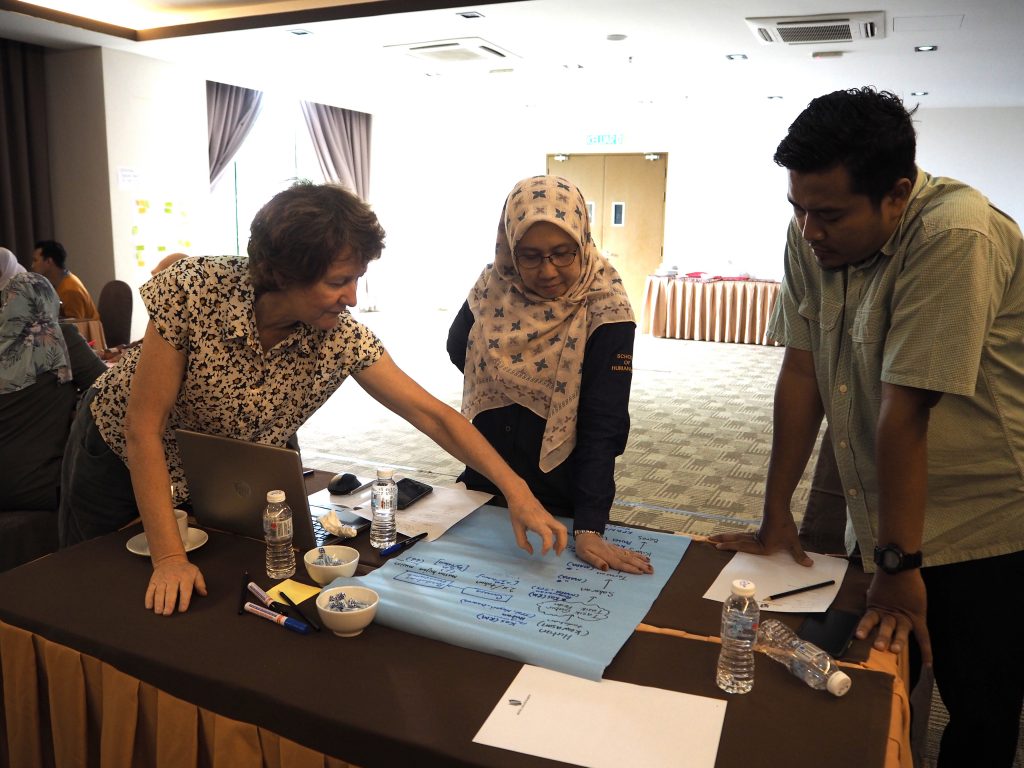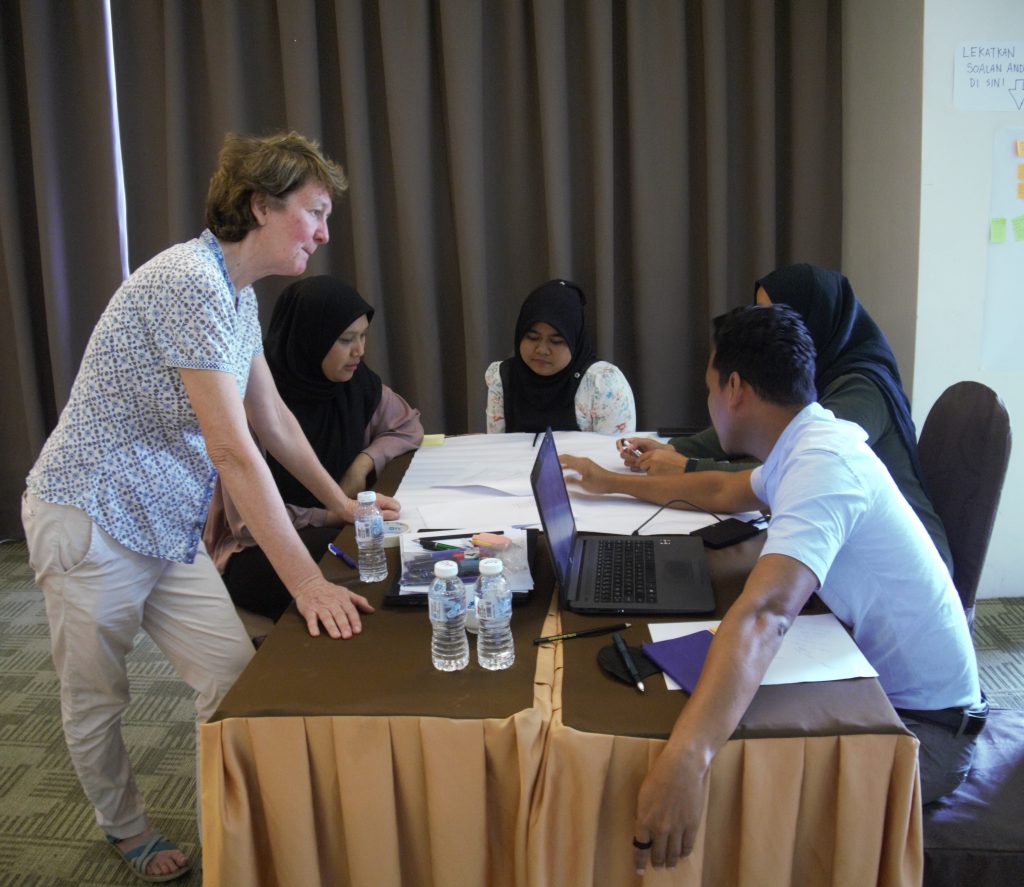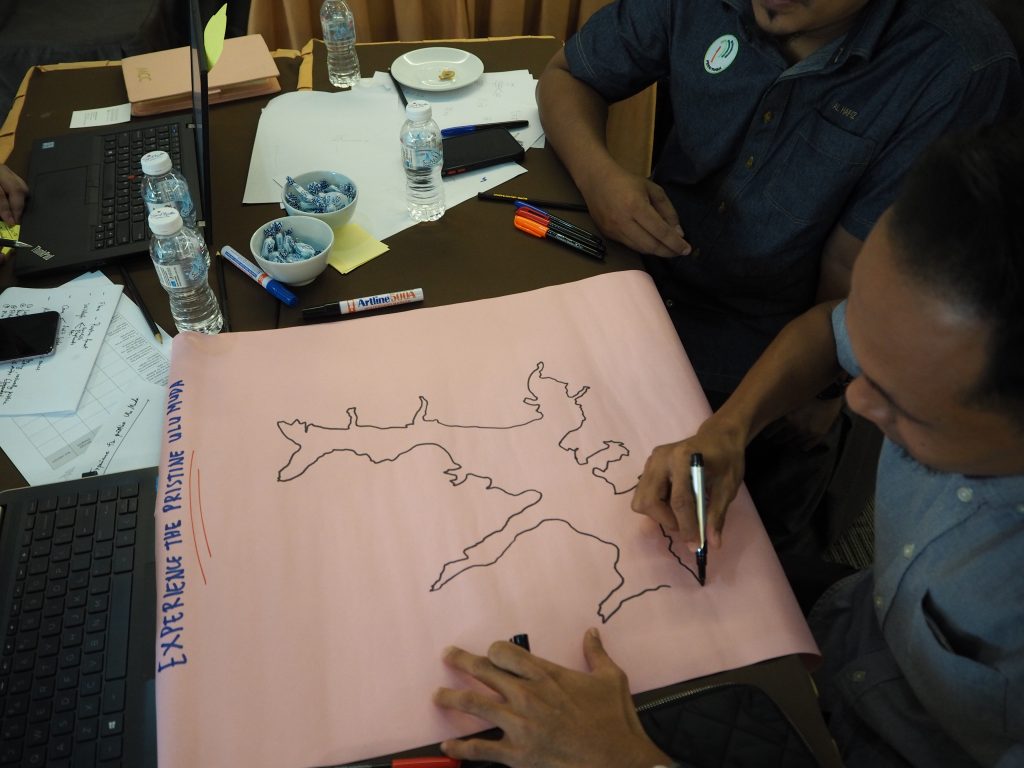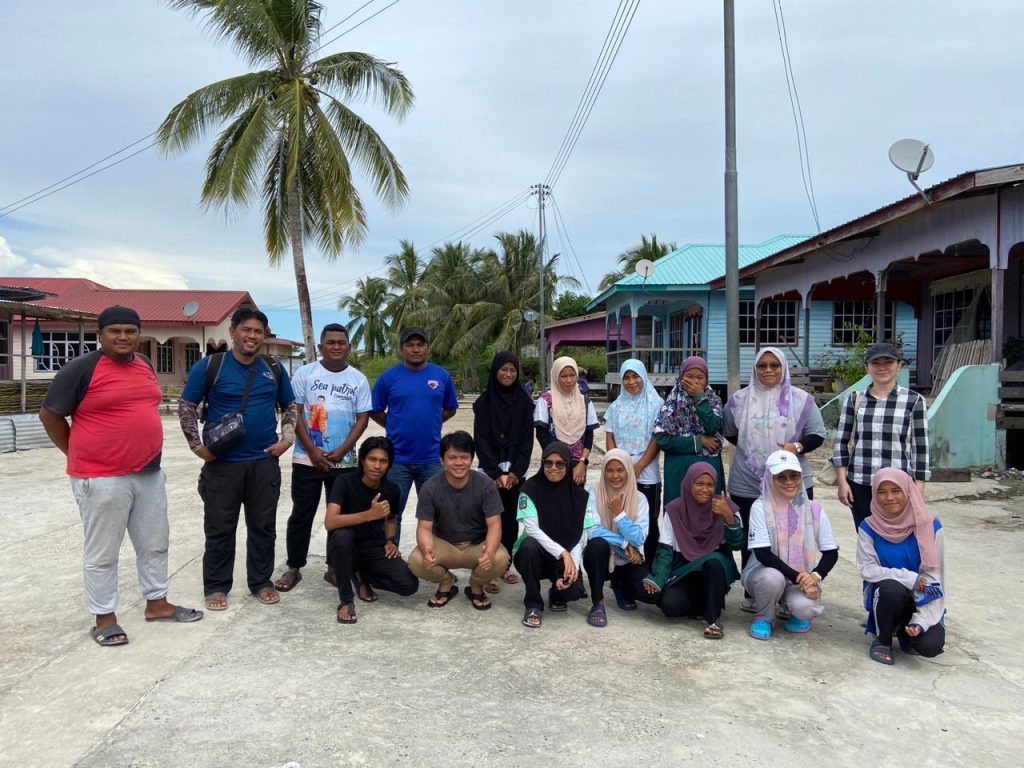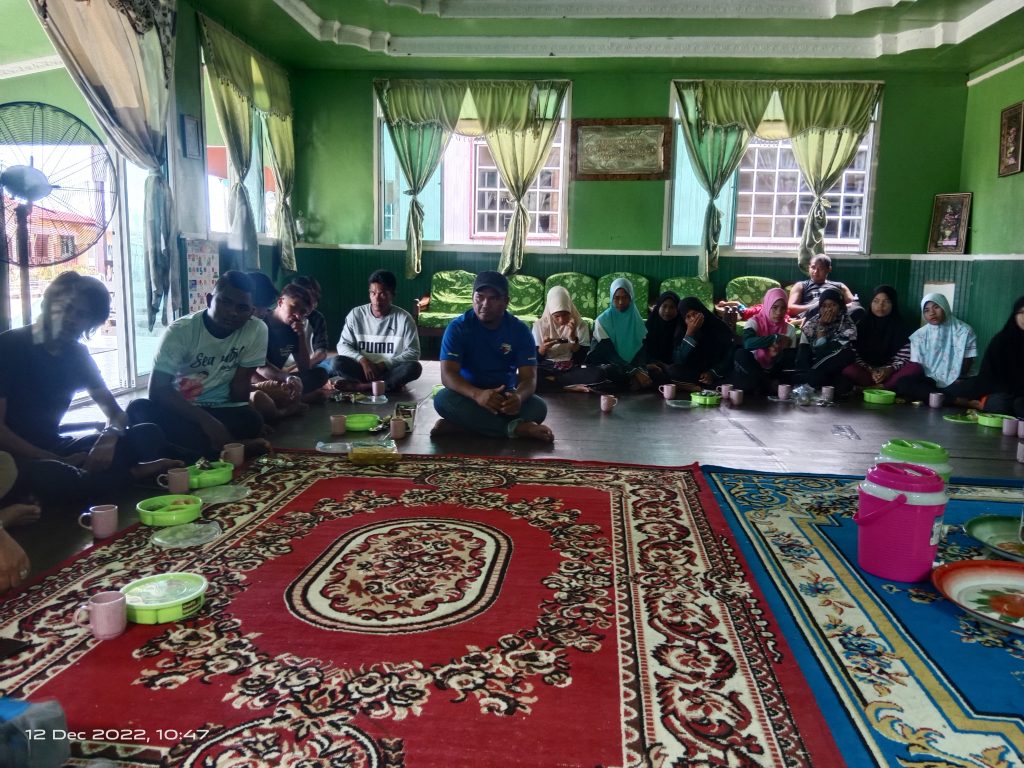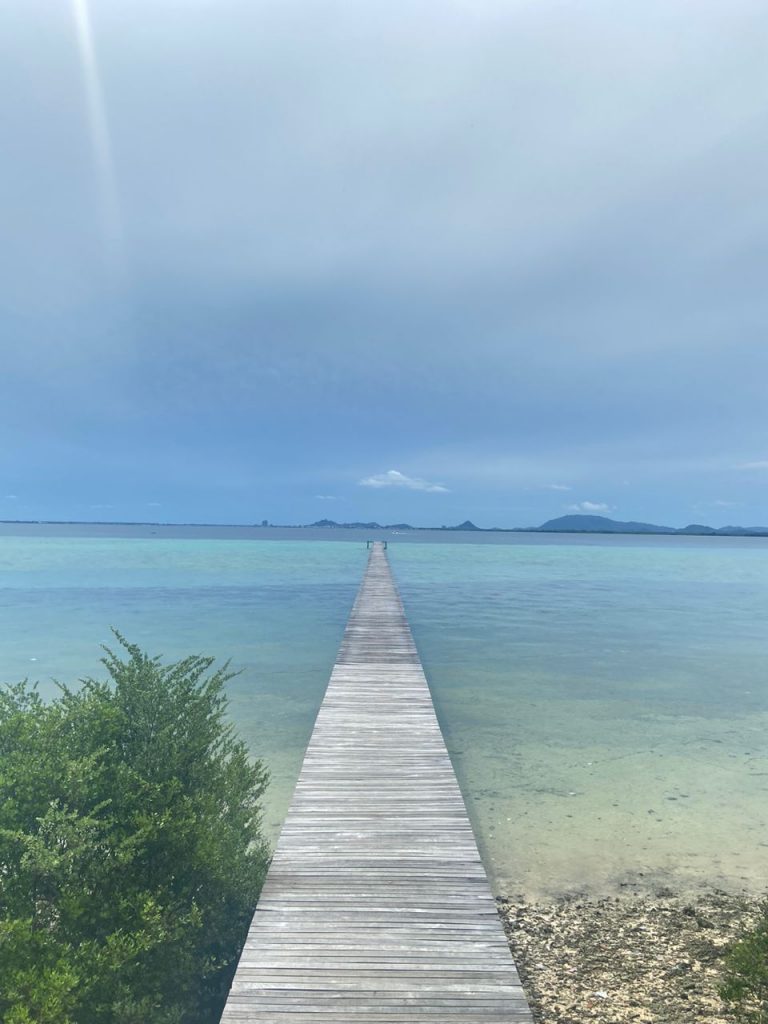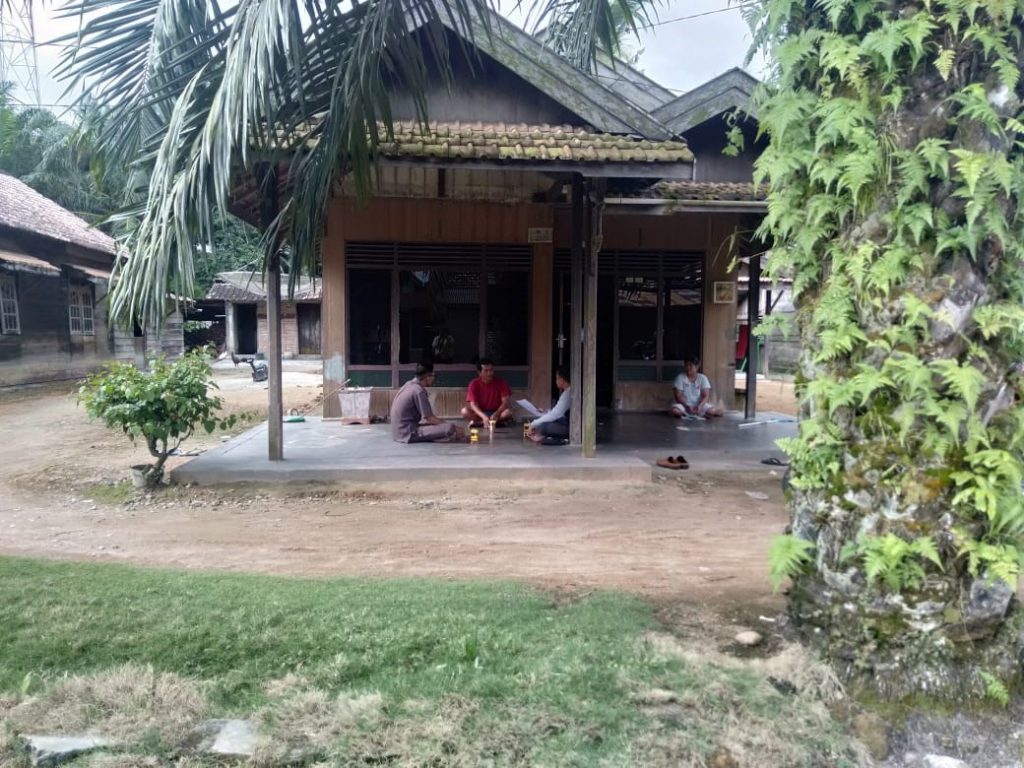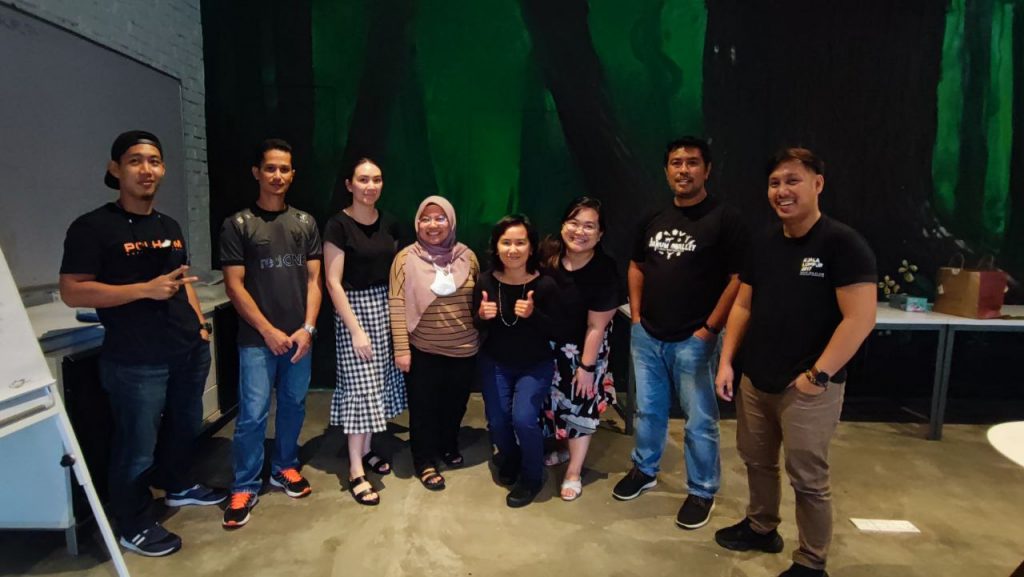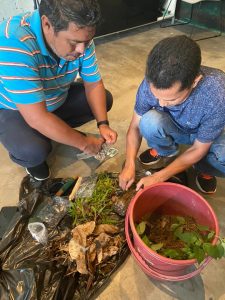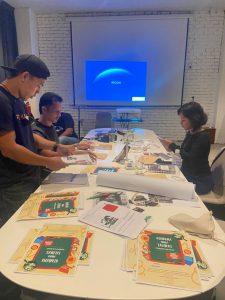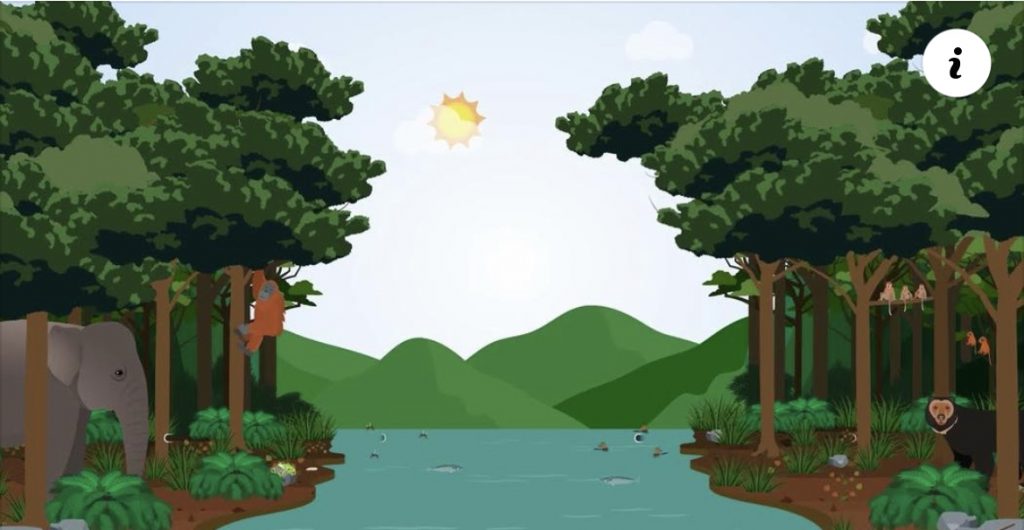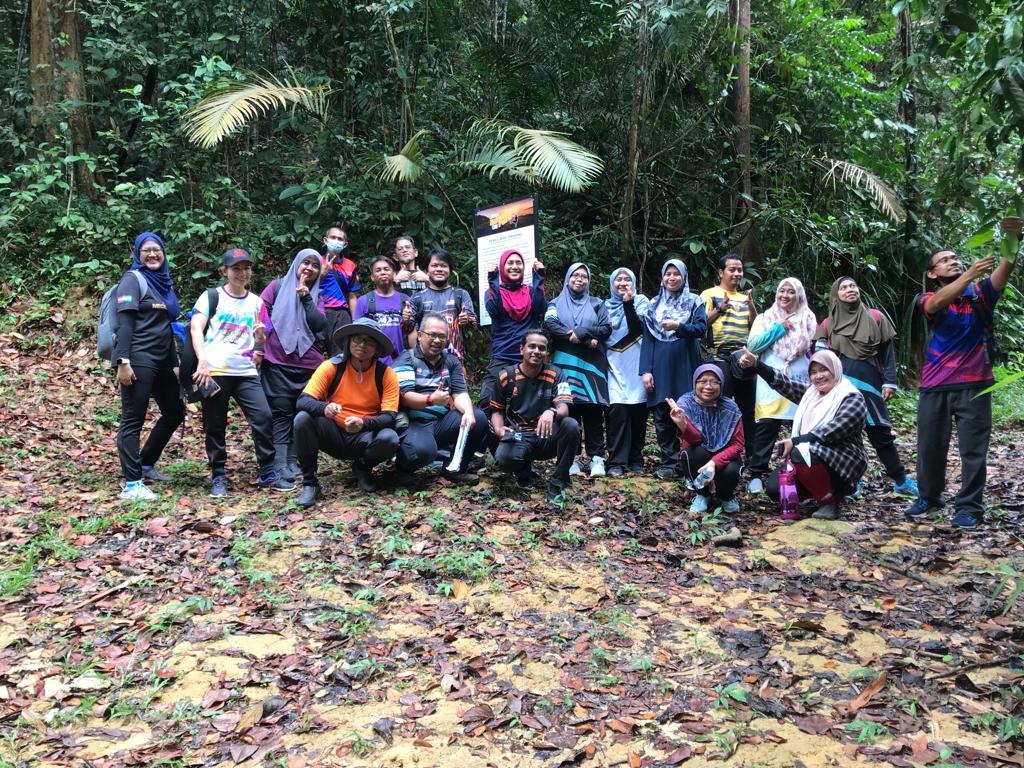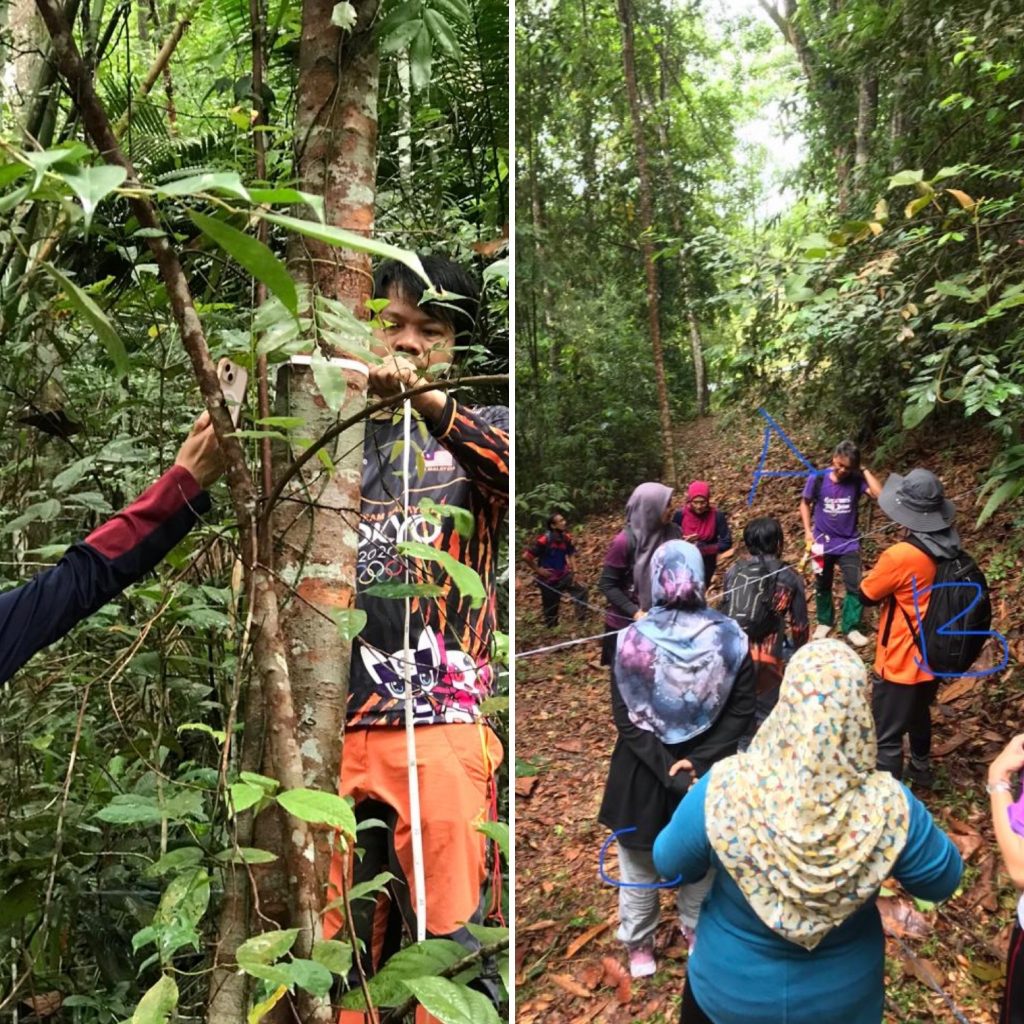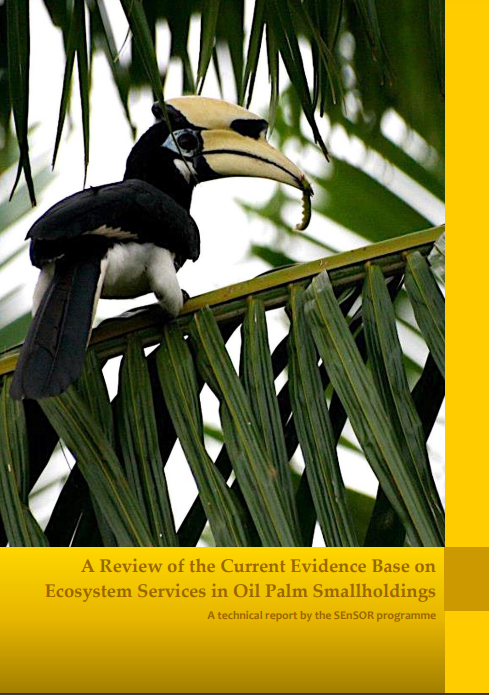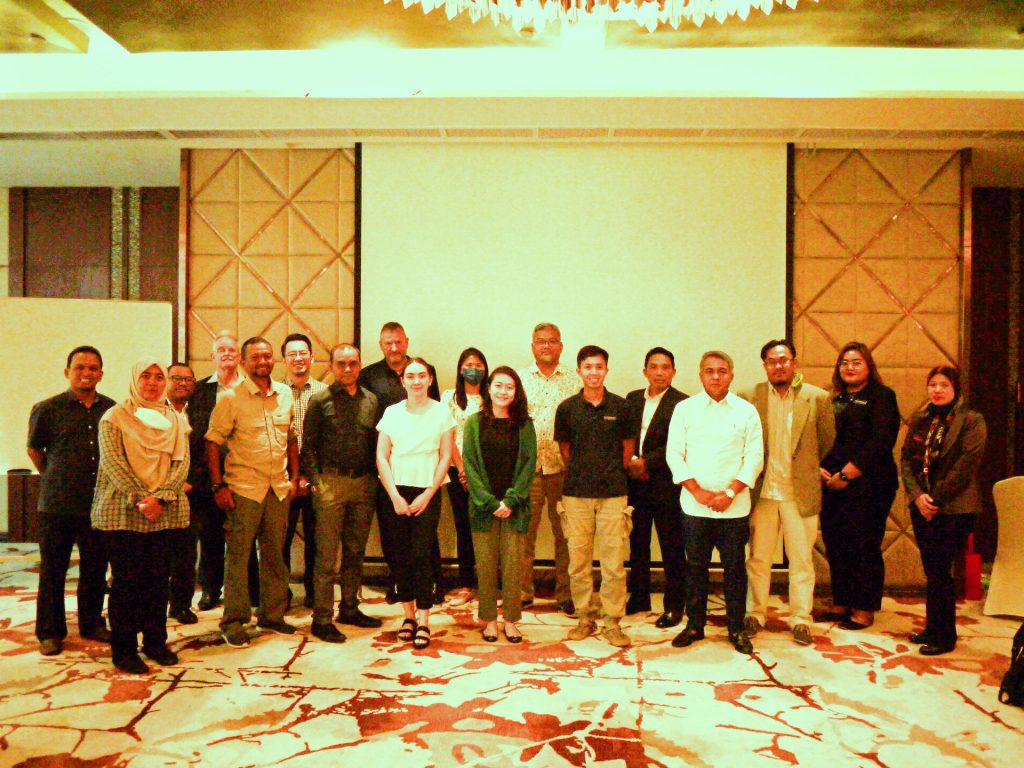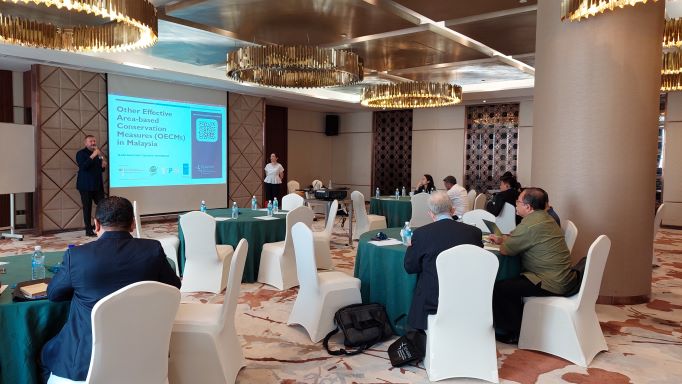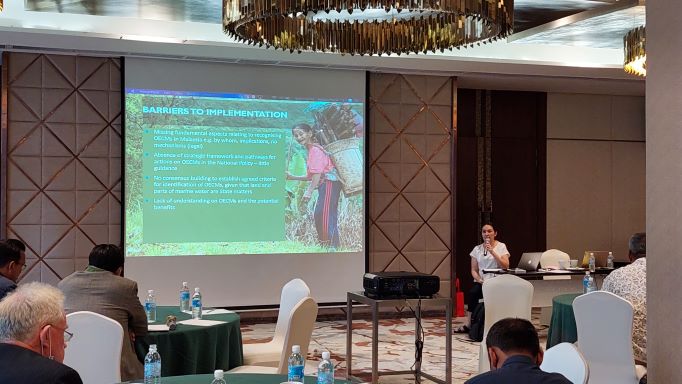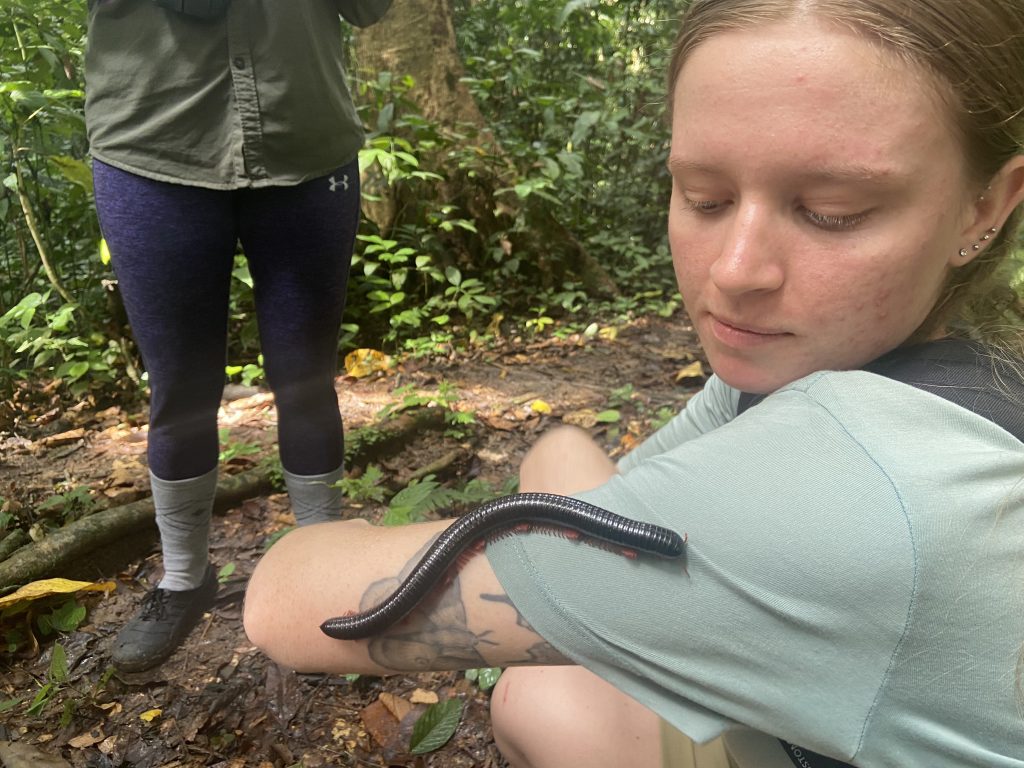
Volunteer students from James Cook University had the opportunity to test the Environmental Education programme activities that we have designed for Malaysian students in Sabah.
Last week the SEARRP team joined volunteer students from James Cook University in North Queensland to test run the Environmental Education(EE) programme activities designed for the EE Kembara Rimba Taliwas project slated to begin in 2023. The Kembara Rimba Taliwas project is an ongoing EE initiative that began in 2018 as a partnership between SEARRP, the Sabah Foundation and the S4 team from Swansea University, with the aim of creating an EE outreach programme for young Malaysian students from eight schools and three different districts on the East coast of Sabah (Kinabatangan, Lahad Datu, Tawau).
This trial programme was divided into two parts – class work and field based activities. The classroom activities were predominantly information sessions where students learned about the biodiversity of the area and the field work that they were going to be practising, with a heavy dose of health and safety tutorials. While the field work focussed on four primary activities: The Living River, Life in a Biocube, What’s my Job and Forest Structure.
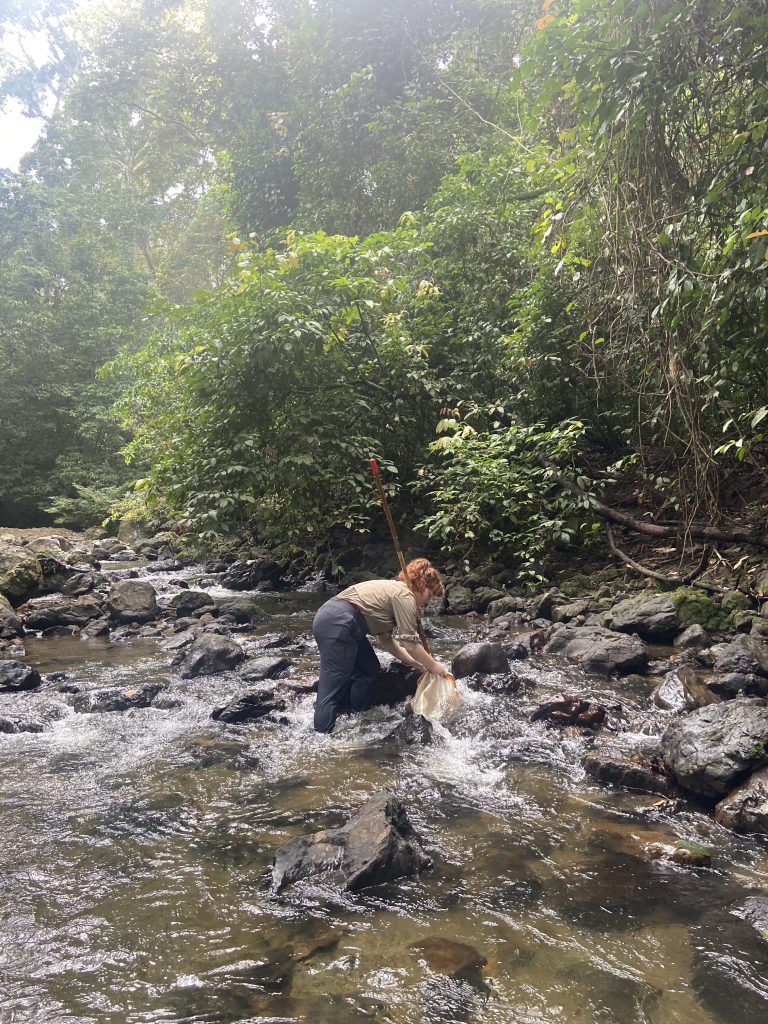
JCU student collection water samples for the Living River field work activity
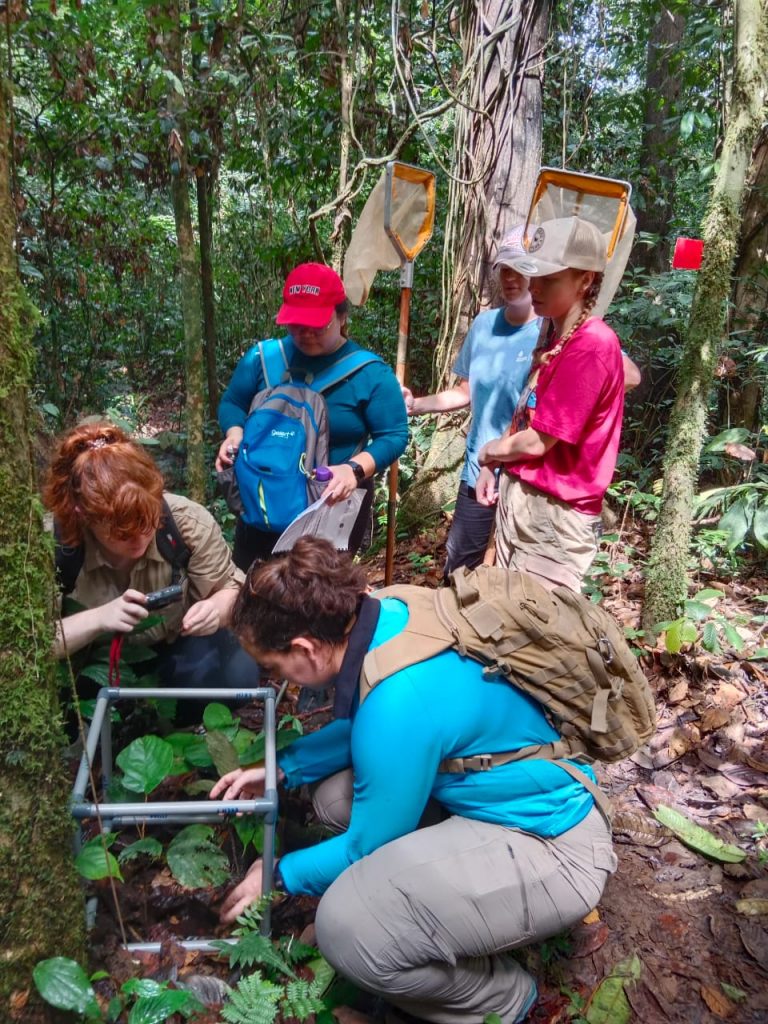
JCU students investigating their selected biocube
The first activity, Living River, invited students to identify different macroinvertebrate groups that help to predict the health of the river. This activity was conducted at the Tambun River in the Danum Valley Field Centre (DVFC), a pristine rainforest, where students took water samples and analysed them in groups in order to draw conclusion about the health of the water ecosystem.
The second activity, Life in a Biocube, allowed students to identify and explore the living organisms in a selected biocube along a riverbank or on the forest floor. This gave them the chance to gather in-depth information and focus on the small to large organisms living within a single biocube of a rainforest ecosystem.
The final day of fieldwork combined the What’s my Job and Forest Structure activities. Together with the help of SEARRP Research Assistants, the JCU students ventured to the Nature Trail inside the Danum Valley Conservation Area to identify animals and determine the roles that they play in the forest ecosystem. Based on this experience, the students were asked to draw the Forest Structure that they observed using their new found knowledge and personal creativity. Prizes were given for the top 5 winners!
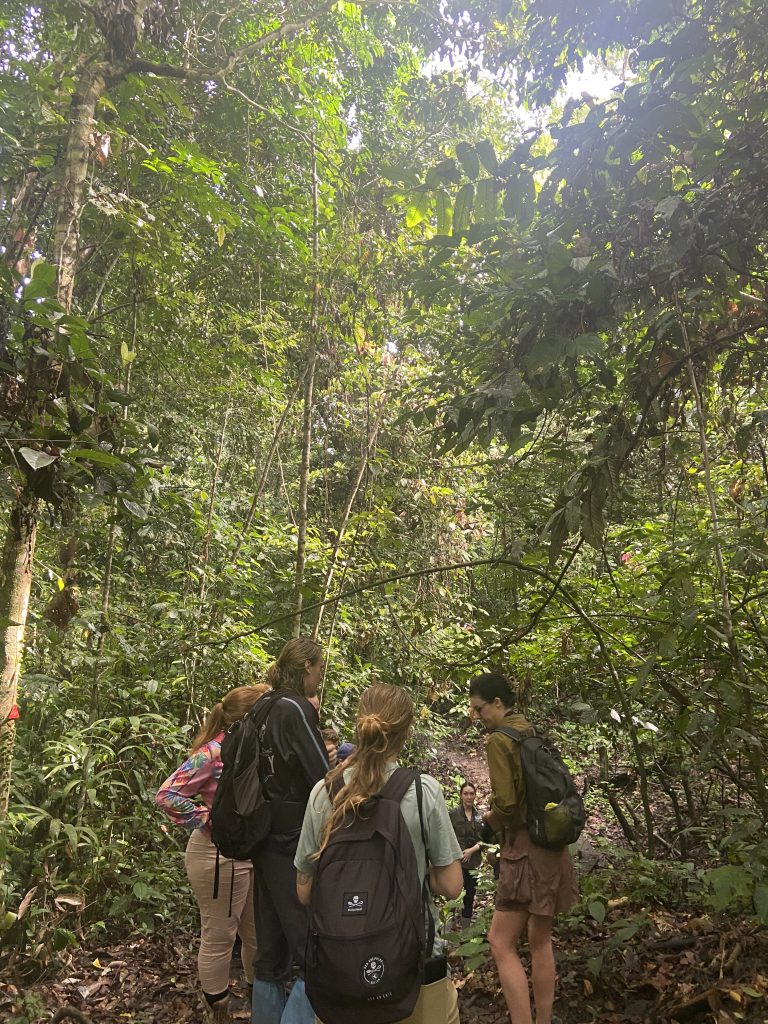
JCU students exploring the Nature Trail at DVFC assessing the role of animals in the surrounding forests
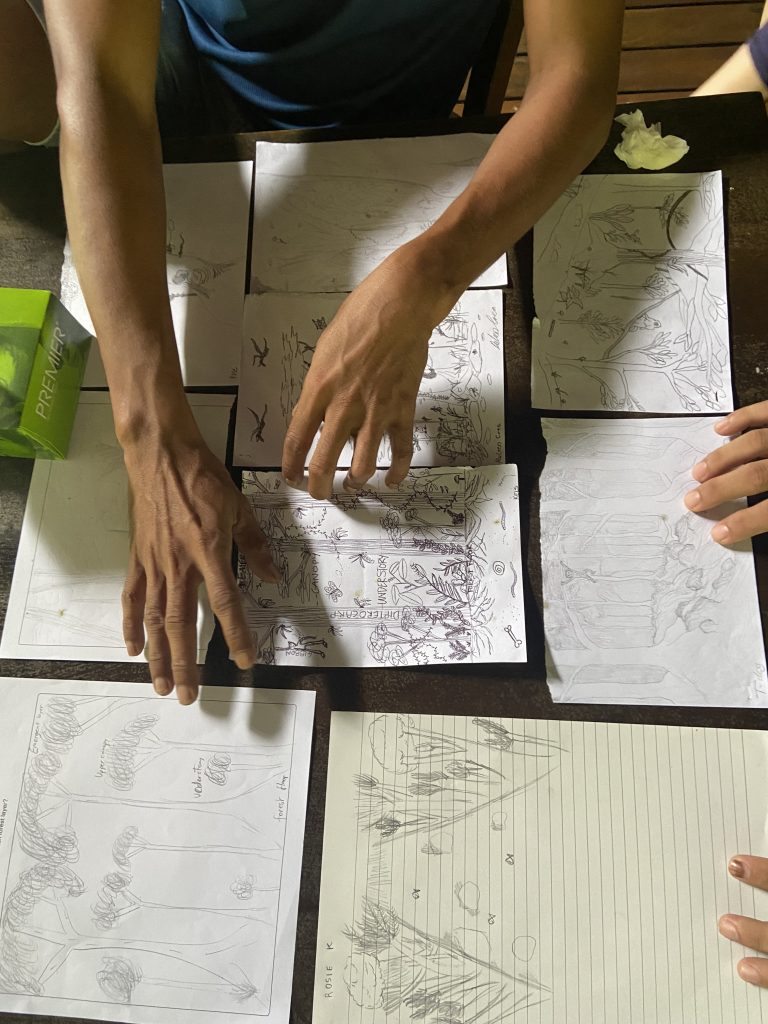
Drawing competition for the Forest Structure activity
At night the learning wasn’t over! SEARRP Deputy Director, Melissa Payne, and SEARRP Environmental Education and Outreach Manager, Imelda Geoffrey, led language lessons in Bahasa Melayu for the JCU students. The first 90 minute lessons focussed on basic Malaysian words, introductions and sentence construction that were taught through role play, games and songs. The second class concentrated on learning the Malaysian words for the plants and animals that the students had been researching all day. The consensus from the group was that the language lessons were an interesting, important and helpful addition to the course.
We have had an amazing time with the JCU volunteers and are so thankful for their participation on The Kembara Rimba Taliwas programme activities. They have provided us with extremely valuable feedback on how to improve the course work, delivery and activities, which will help us to make the necessary adjustments for the upcoming programme with local schools in 2023.
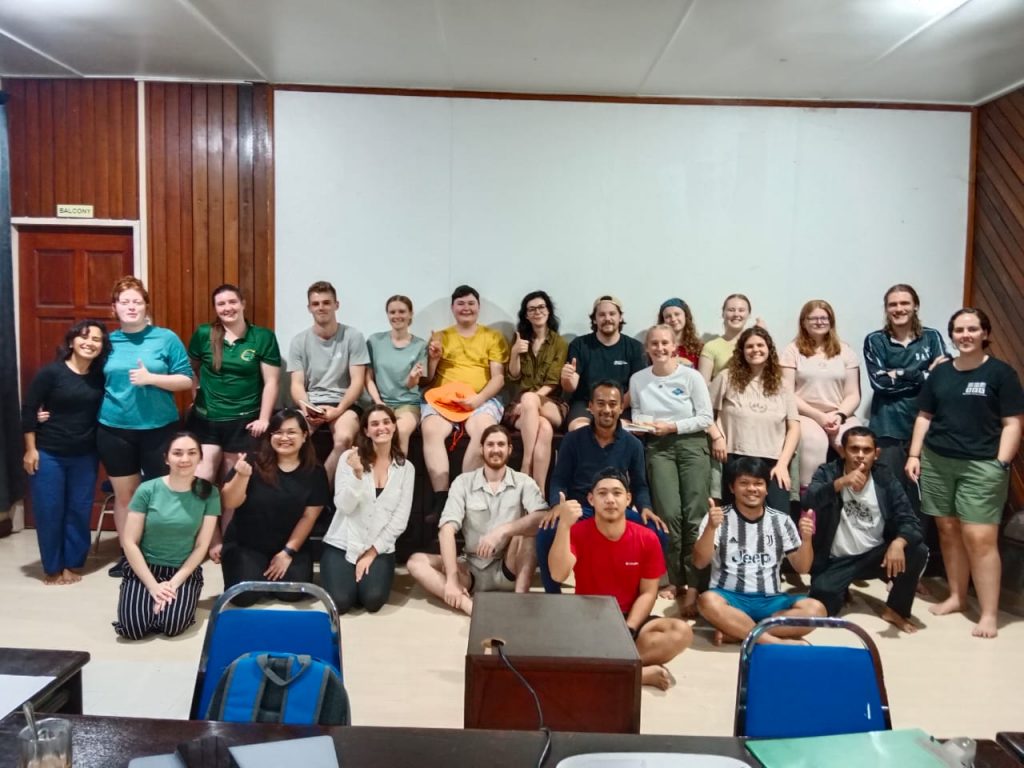
Language classes proved to be a massive hit with the JCU students
